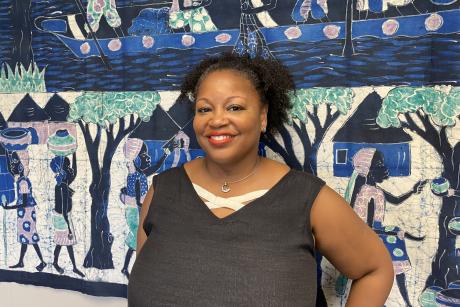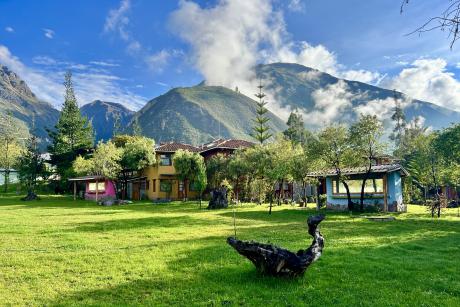
The "Morro" fruit is often used to prepare bathwater and treat mild contusions across the body. It may also be prepared as a hot tea to treat inflammation of the uterus. Picture taken by Kurren Mehta.
Published June 17, 2013, last updated on June 3, 2020 under Voices of DGHI
By Roxana Martinez
When one adds the fact that Guatemala is a biodiversity haven with the fact that the indigenous Maya Popti’ people are centuries old, the result is a methamphetaminic wealth of herbal medicinal knowledge.
The inception of our research was prodigious enough from a plant perspective; any walk that we took out in the open with our community partners was heftily interrupted by micro plant lessons. Pens, notepads, and cameras were hastily and blindly scavenged for as our “chauffeur” (in reality, more like a chauffeur/plant maven/comedic relief extraordinaire type of person) went full speed ahead on one plant. One herb that could treat irregular menstrual cycles could also treat edema, and just three meters away would be another plant that can treat gastritis. What looked like a bushel of leaves to me was a cure to well-trained eye.
On the other hand, there is medicina con quimicas, or medicine as we know it today – pills, injections, powders, creams – which has nippily taken over the medicinal world, a particularly exclusive world that accounts for some and not others. Take Guatemala, for instance. “Indigenous” and “poor” are unnervingly close to being interchangeable terms in this country, one whose population is over 50% indigenous. While poverty means lack of resources, particularly curative ones, the natural drugstore the slopes of this land have always provided continue to be: treatments for uterine infections and nausea just require natural rain and sunshine. We are living in a pharmacy, as our mentor would continually say, and the good thing about this one is that it’s entirely free.
So where does the challenge lie? In having such a large system of herbal medicine and healers that work with it is, the integration of Western biomedicine has proven to be that much more difficult. In each of the towns that we’ve worked in, there has been at least one pharmacy or government-sponsored Centro de Salud, both of which are based on “chemical” medicine. The tension and confusion that arises from both systems of medicine ascends in our interviews time after time. From those with traditional healers, we may hear that Western medicine is destructive for the body, that the doctor-prescribed medications disrupt the body’s natural balance of heat and cold. Yet from interviews with pharmacists, nurses, and doctors, we may hear that patients are placing too much faith in Western medicine, so much so that they will only buy one dose of their medication thinking (and hoping) that it will do the trick. Or even worse, many patients will turn to Western medicine when they’ve realized that traditional medicine has failed them and their disease has gravely progressed.
Even so, from our interviews and from casual conversations with community partners and community members, we’ve acquired that traditional healers –midwives, herbalists, and/or bone-setters – seldom share their herbal know-how with one another for reasons that we continue to investigate. The direct consequence is that the traditional medicinal knowledge becomes concentrated in little pockets about the region: most healers may know that Plant X works moderately well to treat colicos, but one particular healer at the bottom of the hill has experienced Plant X working faster with the leaves of Plant Y and Plant Z, and other healers may never even know about it!
Given the high prevalence of water-borne diseases, diarrheal diseases, and malnutrition amongst such a poverty-stricken country, it is imperative to provide culturally appropriate and high-quality services. The SRT Team has a short-term goal of combining herbal knowledge from all participants into one mega catalog of regional plants and their uses, consequently strengthening the traditional medicine system in the area. Still, it is important to note that traditional medicine does not exist in a bubble and to acknowledge Western medicine's growth locally. Both Western medicine and traditional medicine have their advantages, but each one has their own limits (be it cultural, monetary, or scientific ones). It is essential for each system of medicine to acknowledge one another and, ultimately, to find a common ground for the health and beneficence of so many people.
Previous Posts: A Universal Lanugage & How do you say "strong" in Popti'?


